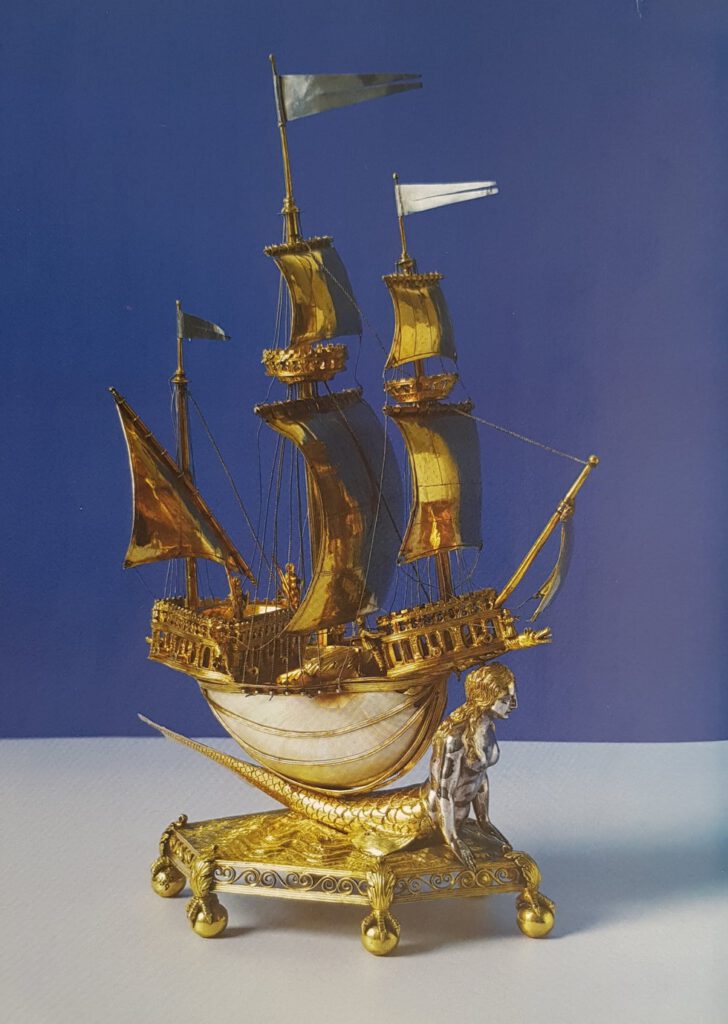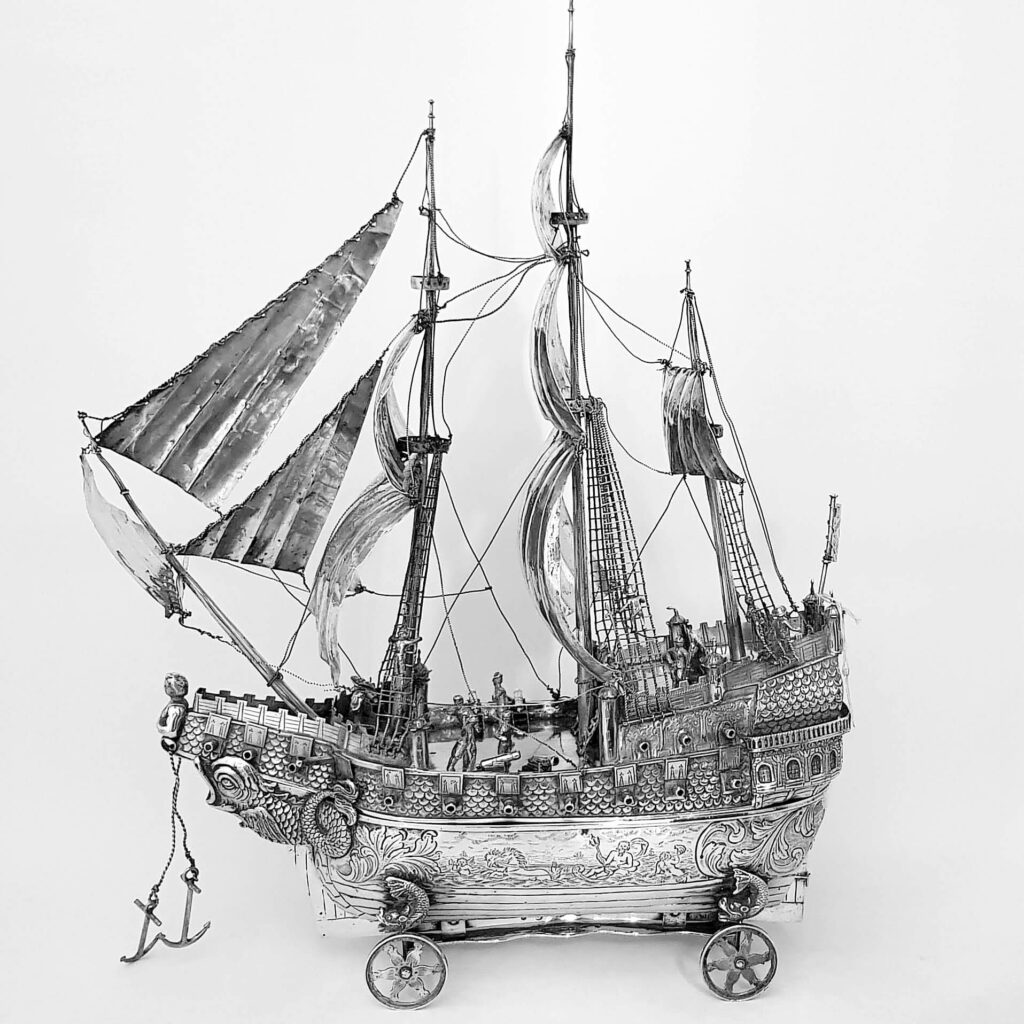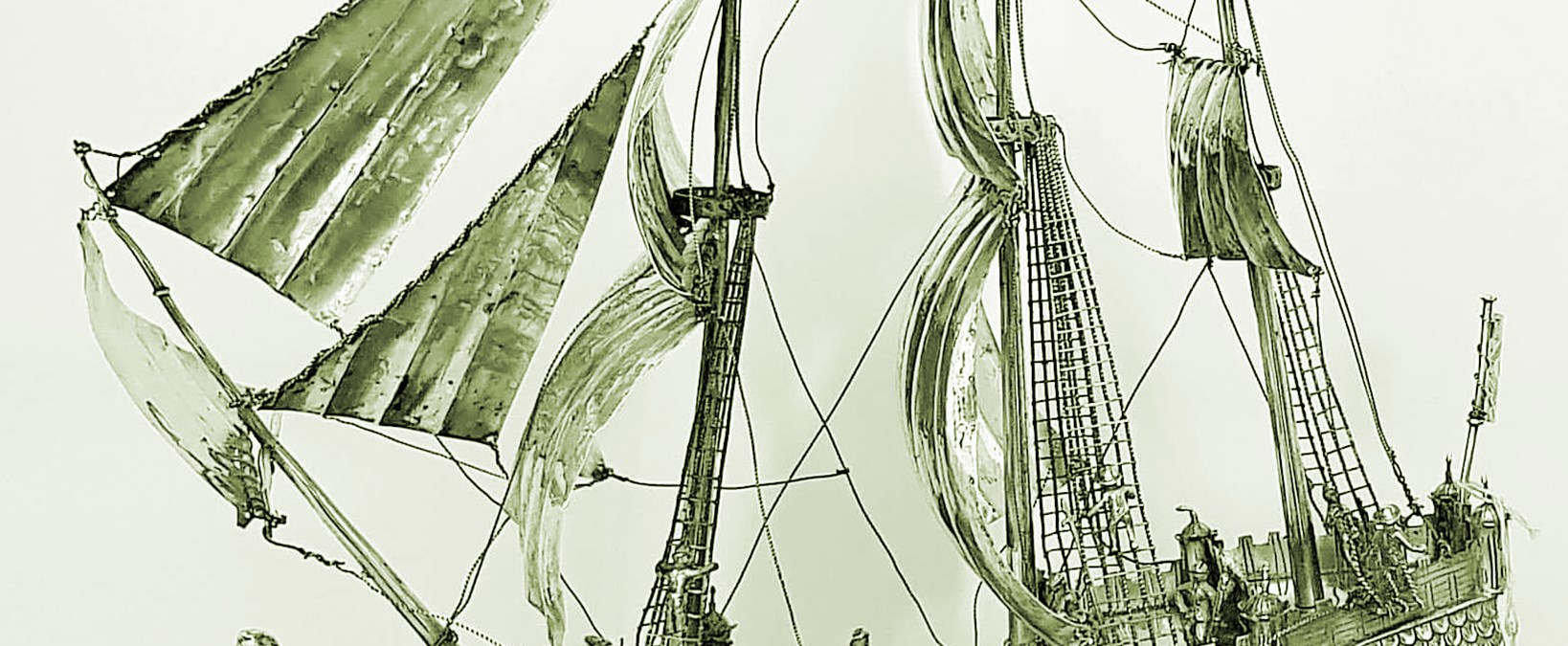The beautiful model sailing ship, known as a Nef (Neff), first came into use during the 13th century. Originating from the continent, these were very popular in France, Germany, Spain and Italy, and can be seen depicted in paintings and manuscripts of the time. Not surprisingly the English word “Nef” is derived from the 11th century Old French name for ship.
These ornamental ships were made especially for the dinner table and were usually very elaborate with masts, sails, rigging and various figures on board. The most important examples were made as symbols of royal status and power, often of considerable silver weight, heavily gilded, and incorporating jewels and other prized materials such as mother of pearl. Most nefs found today were crafted in Germany at the end of the 19th century. Only nine medieval nefs are known to survive today, six of which are housed in church treasuries.
Early examples (13th-16th century) were likely to be used for holding salt, a very expensive commodity in the Middle Ages. They were also used as drinking cups or receptacles for dining implements. The nef was usually placed in front of the main guest at the table as a mark of their status and had the practical purpose of protecting the most important person at the banquet from the dangers of poisoning.
Traditionally the dining table nef was made in two sections and the top half was removable so that the hollow hull could be used to contain the spoon, knife, napkin, spices of the host. When the use of great dining halls declined, the hull was adapted to hold wine, sweetmeats or a variety of special condiments. Often the nef was equipped with wheels and could be rolled from one end of the table to the other.
The Burghley Nef
The beautiful Burghley Nef can be found in the Victoria & Albert Museum collection in London. The precious salt container, with a pearly nautilus shell, is set in gilded silver and rests on a mermaid’s back. At the foot of the mast are the tiny figures of a man and woman playing chess, identified as the ill fated lovers Tristram and Isolde. The base is Paris marked for 1527-28 however nothing else is known of its history. While Arthur Grimwade was compiling an inventory of the silver belonging to the late 5th Marquis of Exeter he found a reference to a nef in a document dated 1844. This may be the nef in the V & A collection today which has been named after the residence of its possible last English owner.
The Burghley Nef can be viewed in Medieval and Renaissance, Room 62, case 17, and is supported by The Art Fund (Cochrane Trust) and the Goldsmiths Company.


19th Century Dutch Silver Nef from waxantiques
This solid silver galleon ship is intricately modelled and shown in full sail. Excellent size and quality throughout. The top section of the Neff can be removed from the hull revealing an open compartment or space. The hull is finely chased with cherubs and leaves, flowers and scrolls. The ship stands on four dolphin mounted wheels.
The 3 tall masts have billowing, multi section sails with full rigging and lookout crow’s nests accessed by men climbing up ladders. The deck is arranged on 4 levels accessed by step ladders, the captain is standing to the fore while the sailors attend to their duties. The double anchor hangs below. The crenelated battlement gallery, with simulated wood effect, is furnished with turrets and below, the port holes have their cannons ready for battle.
Dutch silver stamps
London import marks
Importer Samuel Boyce Landeck


